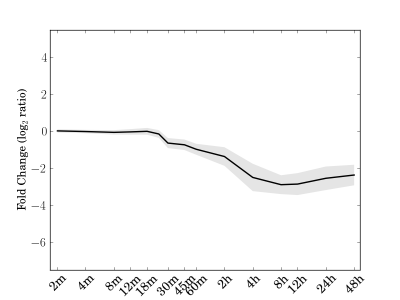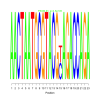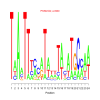Module 134 Residual: 0.11
| Title | Model version | Residual | Score |
|---|---|---|---|
| bicluster_0134 | v02 | 0.11 | -11.00 |
Displaying 1 - 18 of 18
| Cre01.g037850.t1.1 Single hybrid motif superfamily protein | Cre02.g091050.t1.2 Aldolase superfamily protein |
| Cre03.g158000.t1.2 glutamate-1-semialdehyde 2,1-aminomutase 2 | Cre03.g172000.t1.2 NAD(P)-binding Rossmann-fold superfamily protein |
| Cre03.g199535.t1.1 Chlorophyll A-B binding family protein | Cre03.g200250.t1.2 Phosphoenolpyruvate carboxylase family protein |
| Cre03.g208050.t1.2 Thioesterase superfamily protein | Cre05.g242000.t1.2 ALBINA 1 |
| Cre06.g294950.t1.1 NAD(P)-binding Rossmann-fold superfamily protein | Cre07.g313700.t1.1 glutamate tRNA synthetase |
| Cre12.g485800.t1.2 FtsH extracellular protease family | Cre12.g509050.t1.1 PsbP-like protein 1 |
| Cre12.g510800.t1.2 P-loop containing nucleoside triphosphate hydrolases superfamily protein | Cre12.g551950.t1.2 Ankyrin repeat family protein |
| Cre12.g553678.t1.1 | Cre12.g558900.t1.2 Cytochrome b6f complex subunit V |
| Cre17.g715250.t1.2 biotin carboxyl carrier protein 2 | Cre17.g734200.t1.2 Pyridoxal phosphate (PLP)-dependent transferases superfamily protein |
|
e.value: 450000 Motif Bicluster: Width: 23 Number of Sites: 1 Consensus: AACTAATGCGTACGcAGACCAGA |
motif_0134_2Submitted by Anonymous (not verified) on Wed, 05/20/2015 - 14:16e.value: 660 Motif Bicluster: Width: 24 Number of Sites: 1 Consensus: TaAaTTtccaTattTacaTgCcaa |
Displaying 1 - 1 of 1
| Interaction | Weight | |
|---|---|---|
Displaying 1 - 1 of 1
| GO Terms | Descriptions |
|---|---|
| GO:0006779 | GO:0042440 | GO:0006778 | GO:0015979 | porphyrin-containing compound biosynthet... | pigment metabolic process | porphyrin-containing compound metabolic ... | photosynthesis |




Comments